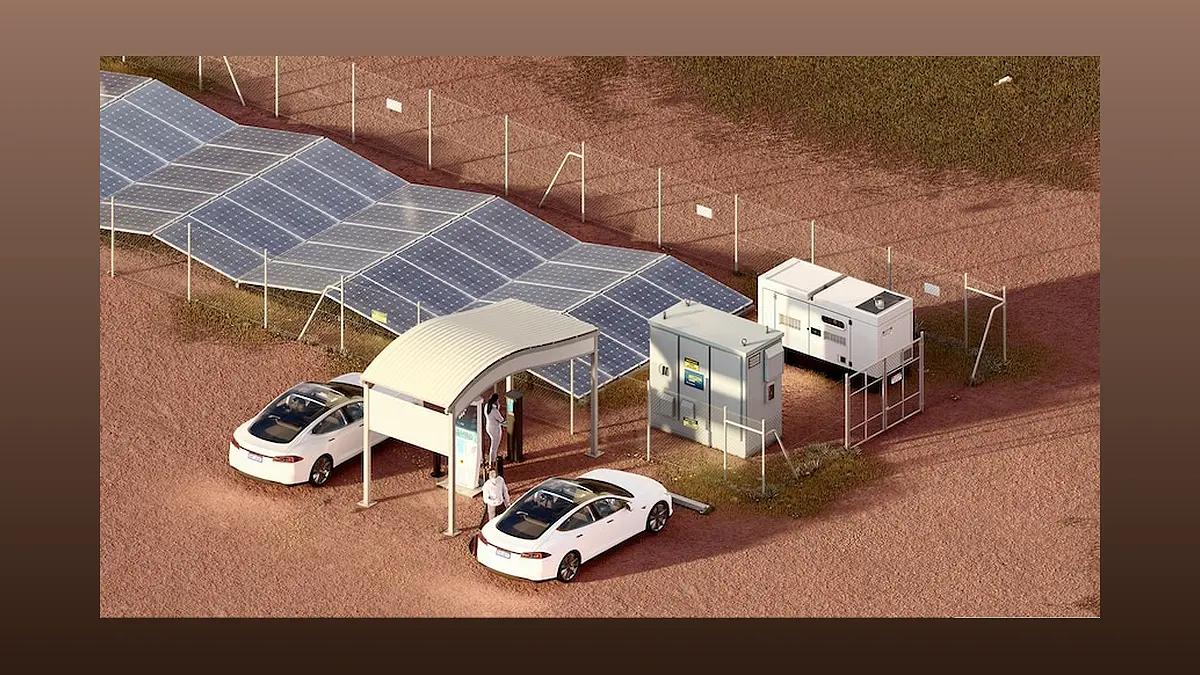Far away from big cities, remote Australia faces unique challenges in accessing fast charging infrastructure for electric vehicles. The National Roads and Motorists Association (NRMA) and its energy subsidiary are collaborating with the government to roll out 137 fast chargers in rural and regional areas. However, the constraint on the grid and the lack of power in some remote locations pose significant barriers. In this article, we explore the innovative solutions being developed by companies like Linked Group Service and Horizon Power to revolutionize electric vehicle charging in remote Australia.
Challenges of Electric Vehicle Charging in Remote Australia
Explore the unique challenges faced in bringing electric vehicle charging infrastructure to remote areas of Australia.
Remote areas of Australia present significant challenges when it comes to electric vehicle charging infrastructure. The main barrier is the constraint on the grid, with some areas having low or no power at all. This makes it difficult to install fast chargers and provide reliable energy to remote communities.
Furthermore, many remote areas rely on gas and backup diesel for their energy needs, making it even more challenging to access clean energy for electric vehicles. The lack of reliable and clean energy sources poses a major hurdle in the adoption of electric cars in remote Australia.
Innovative Solutions for Remote Electric Vehicle Charging
Discover the novel solutions being developed to overcome the challenges of electric vehicle charging in remote Australia.
Companies like Linked Group Service and Horizon Power are working on innovative solutions to enable electric vehicle charging in remote areas of Australia. Linked Group Service has developed a prototype charging station that combines solar panels, battery storage, and a backup diesel generator. This off-grid solution can be installed anywhere, providing fast charging facilities in locations with grid constraints or no grid at all.
Horizon Power, on the other hand, aims to install off-grid electric charging stations using existing infrastructure and renewable energy sources. These solutions are particularly useful in remote locations where charging cars from the mains could overload the grid. By leveraging solar panels and backup diesel generators, Horizon Power is paving the way for sustainable electric vehicle charging in remote Australia.
Enhancing Accessibility to Electric Vehicle Charging
Learn about the efforts to improve accessibility to electric vehicle charging infrastructure in remote areas.
The NRMA and its energy subsidiary are collaborating with the government to roll out 137 fast chargers in rural and regional areas of Australia. These efforts aim to enhance accessibility to electric vehicle charging and address the limited availability of charging infrastructure in remote locations.
Additionally, NRMA Energy is exploring various approaches to deliver charging outside of big cities. This includes adding batteries and augmenting the network in areas with low power supply. By investing in infrastructure and expanding the charging network, the goal is to make electric vehicle charging more accessible and convenient for remote communities.
The Future of Electric Vehicle Adoption in Remote Australia
Discover the potential for electric vehicle adoption in remote areas of Australia and the factors that may drive its growth.
Electric vehicle adoption in remote Australia is expected to increase as more electric car models, particularly 4WDs and utes with longer battery life, become available. Currently, most electric cars in Australia are smaller sedans, limiting their suitability for remote areas.
However, with advancements in technology and the growing demand for sustainable transportation, the future of electric vehicle adoption in remote Australia looks promising. The availability of reliable charging infrastructure and the development of electric vehicles suitable for remote conditions will play a crucial role in driving this growth.
Conclusion
Bringing electric vehicle charging infrastructure to remote areas of Australia is a complex challenge. The constraint on the grid and the lack of power in some remote locations pose significant barriers. However, innovative solutions are being developed, such as off-grid charging stations that leverage clean energy sources like solar panels and battery storage.
Efforts are underway to enhance accessibility to electric vehicle charging, with the rollout of fast chargers in rural and regional areas. The future of electric vehicle adoption in remote Australia looks promising, especially as more electric car models suitable for remote conditions become available.
FQA
What are the main challenges of electric vehicle charging in remote Australia?
The main challenges include the constraint on the grid and the lack of power in some remote locations. This makes it difficult to install fast chargers and provide reliable energy to remote communities.
What innovative solutions are being developed for remote electric vehicle charging?
Companies like Linked Group Service and Horizon Power are developing innovative solutions such as off-grid charging stations that combine solar panels, battery storage, and backup diesel generators. These solutions enable fast charging in locations with grid constraints or no grid at all.
How is accessibility to electric vehicle charging being improved in remote areas?
The NRMA and its energy subsidiary are collaborating with the government to roll out fast chargers in rural and regional areas. They are also exploring approaches like adding batteries and augmenting the network to improve accessibility to charging infrastructure in areas with low power supply.
What is the future of electric vehicle adoption in remote Australia?
Electric vehicle adoption is expected to increase as more electric car models suitable for remote conditions become available. The availability of reliable charging infrastructure and the growing demand for sustainable transportation will drive this growth.

